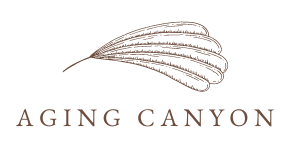Elderly Home Safety Checklist for Fall Prevention
Follow this elderly home safety checklist if you are thinking about how you will prepare a home for a senior loved one. Do not let this become overwhelming if you are new to assisting an elderly person don’t overthink it, YOU CAN DO THIS. Go room by room and take a look around. Use common sense as you look around each room. Do you see areas of the home that look like they could trip and cause a fall or easily catch onto someone walking by? Those are the things you want to address immediately. Look over these suggestions in each room of the home and it will be ready for a senior to age in place safely.
There are 5 key areas of the house to secure first.
- Floors & Hallways
- Bedroom
- Bathroom
- Kitchen
- Stairways & Entryways

How to Safety Proof Home for the Elderly
Assisting an elderly loved one with adding senior safety solutions to their home can be a delicate situation. The following suggestions are straightforward and can be accomplished with minimal annoyance while delivering great results regarding preventing falls and easing aging in place. Family caregivers that know how to prevent falls for seniors are able to take these concrete steps and create a safe home for their loved ones.
Floors & Hallways
Keeping clean floors reduces fall risks significantly. This is addressed by using nonskid rugs, securing electrical wires and other potential trip hazards, and checking for adequate nighttime lighting. Identify the most commonly used paths in the home. Transitions from the bedroom to the bathroom or kitchen are used more frequently at night. Install motion detector nightlights if there is no fixed lighting with easy on/off access.
Bedroom
The bedroom requires specific focus due to the transition that is difficult for many elderly people getting in and out of bed. Adequate lighting in the bedroom is essential to fall prevention. Plug a light in next to the bed and within easy reach without needing to be out of bed. Use plug-in nightlights that are either always on or motion activated. For elderly individuals with a high risk of falling and a history of falls add a second landline phone on the floor next to the bed.
Bathroom
A bathroom is a dangerous place due to potential wet floors and bare feet. Install grab bars next to the toilet and the transition zone going into and out of the shower. As a result, seniors choose to install a shower chair or even a stand-up tub to assist in bathing. Use nonslip mats on the floor and add traction to the floor of the shower or bathtub. Senior bathroom aids including shower bars for seniors are essential to any aging-in-place plan for long-term success.
Kitchen
Kitchens need to be organized with important items easily accessible within arm’s reach. Avoid using a footstool or standing on a chair to reach hard-to-get items. Consequently, anything that is placed in high cupboards should be accessible with a grabber. Mats in the kitchen need to be nonslip and avoid overly soft ones. Evaluate the types of meals that are being cooked on a daily basis and proactively streamline the process for things that will be used including pans, spices, oil, utensils, etc. Obviously, consider different meal service options in your local area to reduce the amount of time spent standing in the kitchen cooking and cleaning each day. Senior-focused meals by groups like meals on wheels or other meal kit service companies provide nutritious food delivered directly to the home.
Stairways & Entryways
All stairways require handrails for seniors. Check the lighting for stairways including the landings at the bottom of the staircase. Keep these areas clear and avoid stacking belongings on the stairsteps. The entryway to the home needs to be well-lit.
Keep these areas free and clear of obstructions and tripping hazards. For example, sweep any leaves on the steps or path to the driveway or street. Certainly, pressure washing the cement and removing any layers of algae or moss growing will eliminate potential slipping zones and help your loved one avoid a nasty fall.
Family Caregiver Checklist for Senior Home Safety
In the event that you find yourself seeking an elderly home safety checklist know that you will be successful. Take a room-by-room approach and identify hazards first, then look for solutions to enhance safety, and then focus on being an awesome friend/family caregiver. A home that is prepared for aging in place is a much safer place for the elderly. This in return provides peace of mind to you the caregiver. The more proactive you can be as a caregiver the easier it will be to support a senior growing old in their own home.

